Varcarolis Foundations of Psychiatric Mental Health Nursing 9th Edition – Test Bank
Chapter 01: Mental Health and Mental Illness
Halter: Varcarolis Foundations of Psychiatric-Mental Health Nursing: A Clinical Approach, 9th Edition
MULTIPLE CHOKE
1. The scope of practiced for an advanced nurse practitioner would include which intervention?
a. Conducting a mental health assessment.
b. Prescribing psychotropic medication.
c. Establishing a therapeutic relationship.
d. Individualizing a nursing care plan.
ANS: 8
In most states, prescriptive privileges are granted to master’s-prepared nurse practitioners and clinical nurse specialists who have taken special courses on prescribing medication. The nurse prepared at the basic level is permitted to perform mental health assessments, establish relationships, and provide individualized care planning.
PTS:
1
DIF: Cognitive Level: Understand (Comprehension)
TOP: Nursing Process:
Implementation MSC: Client Needs: Safe, Effective Care Environment
2. A nursing student expresses concerns that mental health nurses “lose all their clinical nursing skills.” Select the best response by the mental health nurse.
a. “Psychiatric nurses practice in safer environments than other specialties. Nurse-toclient ratios must be better because of the nature of the clients’ problems.”
b. “Psychiatric nurses use complex communication skills as well as criticall thinking to solve multidimensional problems. I am challenged by those situations.”
c. “That’s a misconception. Psychiatric nurses frequently use high technology monitoring equipment and manage complex intravenous therapies.”
d. “Psychiatric nurses do not have to deal with as much pain and suffering as medical- surgical nurses do. That appeals to me.”
The practice of psychiatric nursing requires a different set of skills than medical-surgical nursing, though there is substantial overlap. Psychiatric nurses must be able to help clients with medical as well as mental health problems, reflecting the holistic perspective these nurses must have. Nurse-client ratios and workloads in psychiatric settings have increased, Just like other specialties. Psychiatric nursing involves clinical practice, not just documentation Psychosocial pain and suffering are as real as physical pain and suffering.
PTS: 1
DIF:
Cognitive Level: Apply (Application] TOP:Nursing Process:
Implementation MSC: Client Needs Safe Effective Care Environment
3. When a new bill introduced in Congress reduces funding for care of persons diagnosed with mental illness, a group of nurses write letters to their elected representatives in opposition to the legislation. Which role have the nurses fulfilled?
a. Recovery
b. Attending
c. Advocacy
d. Evidence-based practice
ANS: C
An advocate defends or asserts another’s cause, particularly when the other person lacks the ability to do that for self. Examples of individual advocacy include helping clients understand their rights or make decisions. On a community scale, advocacy includes political activity, public speaking, and publication in the interest of improving the human condition. Since funding is necessary to deliver quality programming for persons with mental illness, the letterwriting campaign advocates for that cause on behalf of clients who are unable to articulate their own needs.
PTS 1
DIF: Cognitive Level: Understand (Comprehension)
TOP: Nursing Process: Evaluation
MSC: Client Needs: Safe, Effective Care Environment
4. A family has a long history of conflicted relationships among the members. Which family member’s comment best reflects a mentally healthy perspective?
a.
“I’ve made mistakes but everyone else in this family has also.”
b. I remember joy and mutual respect from our early years together.”
c. I will make some changes in my behavior for the good of the family.”
d. “It’s best for me to move away from my family. Things will never change.”
ANS: C
The correct response demonstrates the best evidence of a healthy recognition of the Importance of relationships. Mental health includes rational thinking, communication skills, learning, emotional growth, resilience, and self-esteem. Recalling joy from earlier in life may be healthy, but the correct response shows a higher level of mental health. The other Incorrect responses show blaming and avoidance.
PTS 1
DIF: Cognitive Level: Analyze (Analysis)
TOP: Nursing Process: Assessment
MSC: Client Needs:Psychosocial integrity
5. Which assessment finding most clearly indicates that a client may be experiencing a mental ness?
a. reporting occasional sleeplessness and anxiety.
b. reporting a consistently sad, discouraged, and hopeless mood.
c. being able to describe the difference between “as if” and “for real.”
d. experiencing difficulty making a decision about whether to change jobs.
ANS: 8
The correct response describes a mood alteration, which reflects mental illness. The distracters describe behaviors that are mentally healthy or within the usual scope of human experience.
PTS: 1
DIF: Cognitive Level: Apply (Application)
TOP: Nursing Process: Assessment
MSC: Client Needs: Psychosocial integrity
6. Which finding best indicates that the goal “Demonstrate mentally healthy behavior” was achieved for an adult dient?
a. being willing to work towards achieving ideals and meeting demands.
b. behaving without considering the consequences of personal actions.
c. aggressively meeting personal needs without considering the rights of others.
d. seeking help from others to avoid assuming responsibility for major areas of own life.
ANS: A
Mental health is a state of well-being in which individuals reach their own potential, cope with the normall stresses of life, work productively, and contribute to the community. Mental health provides people with the capacity for rational thinking, communication skills, learning, emotional growth, resilience, and self-esteem. The correct response describes an adaptive, healthy behavior. The distracters describe malladaptive behaviors.
PTS: 1
DIF: Cognitive Level Apply (Application)
TOP: Nursing ProcessEvaluation
MSC: Client Needs: Psychosocial integrity
7. A nurse encounters an unfamiliar psychiatric disorder on a new client’s admission form. Which resource should the nurse consult to determine criteria used to establish this diagnosis?
a. International Statistical Classification of Diseases and Related Health Problems (CD-10)
b. The ANA’s Psychiatric-Mental Health Nursing Scope and Standards of Practice
c. Diagnostic and Statistical Manual of Mental Disorders (DSM-V)
d. A behavioral health reference manual
ANS: C
The DSM-V gives the criteria used to diagnose each mental disorder. It is the official guideline for diagnosing psychiatric disorders. The distracters may not contain diagnostic criteria for a psychiatric illnes다.
PTS: 1
Dif: Cognitive Level: Understand (Comprehension)
TOP: Nursing Process: Assessment
MSC: Client Needs: Safe, Effective Care Environment
8. A nurse wants to find a description of diagnostic criteria for anxiety disorders. Which resource would have the most complete information?
Nursing Outcomes Classification (NOC)
b. DSM-V
c. The ANA’s Psychiatric Mental Health Nursing Scope and Standards of Practice
d. ICD-10
ANS: B
The DSM-V details the diagnostic criteria for psychiatric clinical conditions. It is the official guideline for diagnosing psychiatric disorders. The other references are good resources but do not define the diagnostic criteria.
PTS: 1
DIF Cognitive Level: Understand (Comprehension) TOP: Nursing Process:
Implementation MSC: Client Needs Safe Effective Care Environment
9. Which individual behavior demonstrates resilience?
a. Repress stressors associated with a divorce.
b. Continuing to grieve the death of a spouse for 5 years.
c. Continuing to live in a shelter for 2 years after the home is destroyed by fire.
d. Taking a temporary job to maintain financial stability after loss of a permanent job.
ANS: D
Resilience is closely associated with the process of adapting and helps people facing tragedies, loss, trauma, and severe stress. It is the ability and capacity for people to secure the resources they need to support their well-being. Repression and protracted grief are unhealthy. Living in a shelter for 2 years shows a failure to move forward after a tragedy. See related audience response question.
PTS: 1
DIF: Cognitive Level: Understand (Comprehension)
TOP: Nursing Process: Assessment
MSC: Client Needs: Psychosocial integrity
10. The relationship of the North American Nursing Diagnosis Association (NANDA) is to clinicall Judgment as Nursing Interventions Classification (NIC) is to what?
a client outcomes.
b. nursing actions.
c. diagnosis.
d. symptoms.
ANS: B
Analogies show parallel relationships. NANDA, the North American Nursing Diagnosis Association, identifies diagnostic statements regarding human responses to actual or potential health problems. These statements represent clinical judgments. NIC (Nursing Interventions Classification) identifies actions provided by nurses that enhance client outcomes. Nursing care activities may be direct or indirect.
PTS: 1
DIF: Cognitive Level: Understand (Comprehension)
TOP: Nursing Process: Evaluation
MSC: Client Needs: Safe, Effective Care Environment
11. An adult says, “Most of the time I’m happy and feel good about myself. I have learned that what I get out of something is proportional to the effort I put into it.” Which number on this mental health continuum should the nurse sellect?
Mental Illness Mental Health
12345
1
b2
c. 3
d4
e. 5
ANS: E
The adult is generally happy and has an adequate self-concept. The statement indicates the adult is reality-oriented, works effectively, and has control over own behavior. Mental health does not mean that a person is allways happy.
PTS: 1
Dif: Cognitive Level: Apply (Application)
TOP: Nursing Process: Assessment
MSC: Client Needs: Psychosocial integrity
12. Which disorder is an example of a culture-bound syndrome?
a. Epilepsy
b. Schizophrenia
c. Running amok
d. Major depressive disorder
ANS: C
Culture-bound syndromes occur in specific sociocultural contexts and are easily recognized by people in those cultures. A syndrome recognized in parts of Southeast Asia is running amok, in which a person (usually a male) runs around engaging in furious, almost Indiscriminate violent behavior.
PTS:
DIF: Cognitive Level: Understand [Comprehension) TOP: Nursing
Process: Assessment
MSC: Client Needs Psychosocial integrity
13. What does the DSM-V classify?
a deviant behaviors
b. present disability or distress
c. people with mentall disorders
d. mental disorders
ANS: D
The DSM-V classifies disorders people have rather than people themselves. The terminology of the tool reflects this distinction by referring to individuals with a disorder rather than as a “schizophrenic” or “alcoholic,” for example. Deviant behavior is not generally considered a mental disorder. Present disability or distress is only one aspect of the diagnosis.


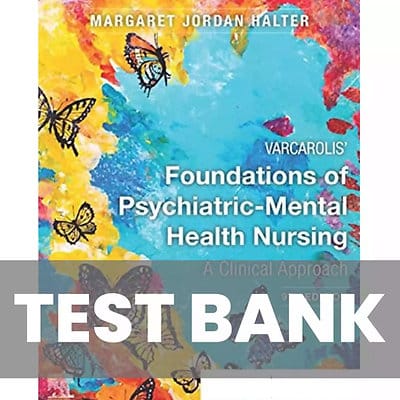
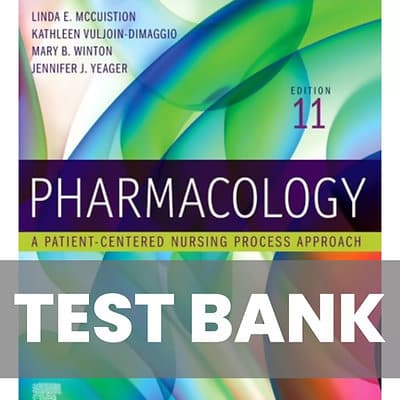
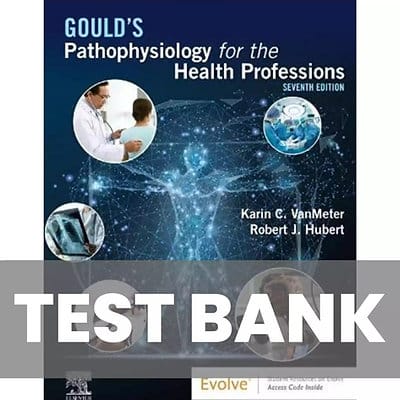
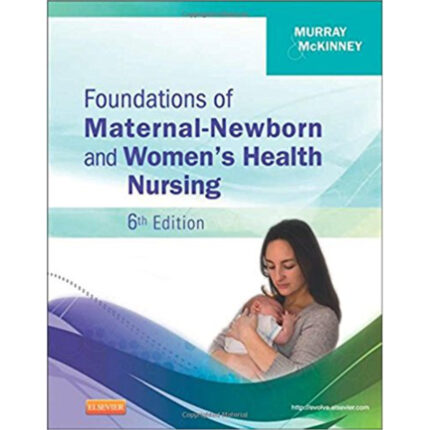



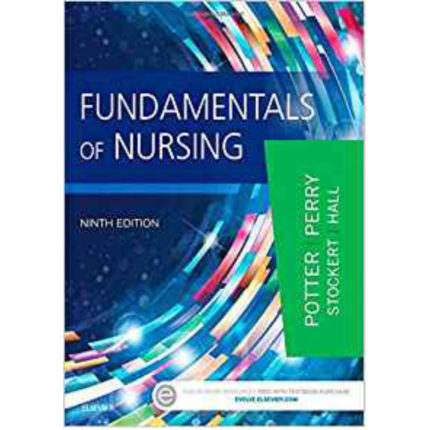



Reviews
There are no reviews yet.